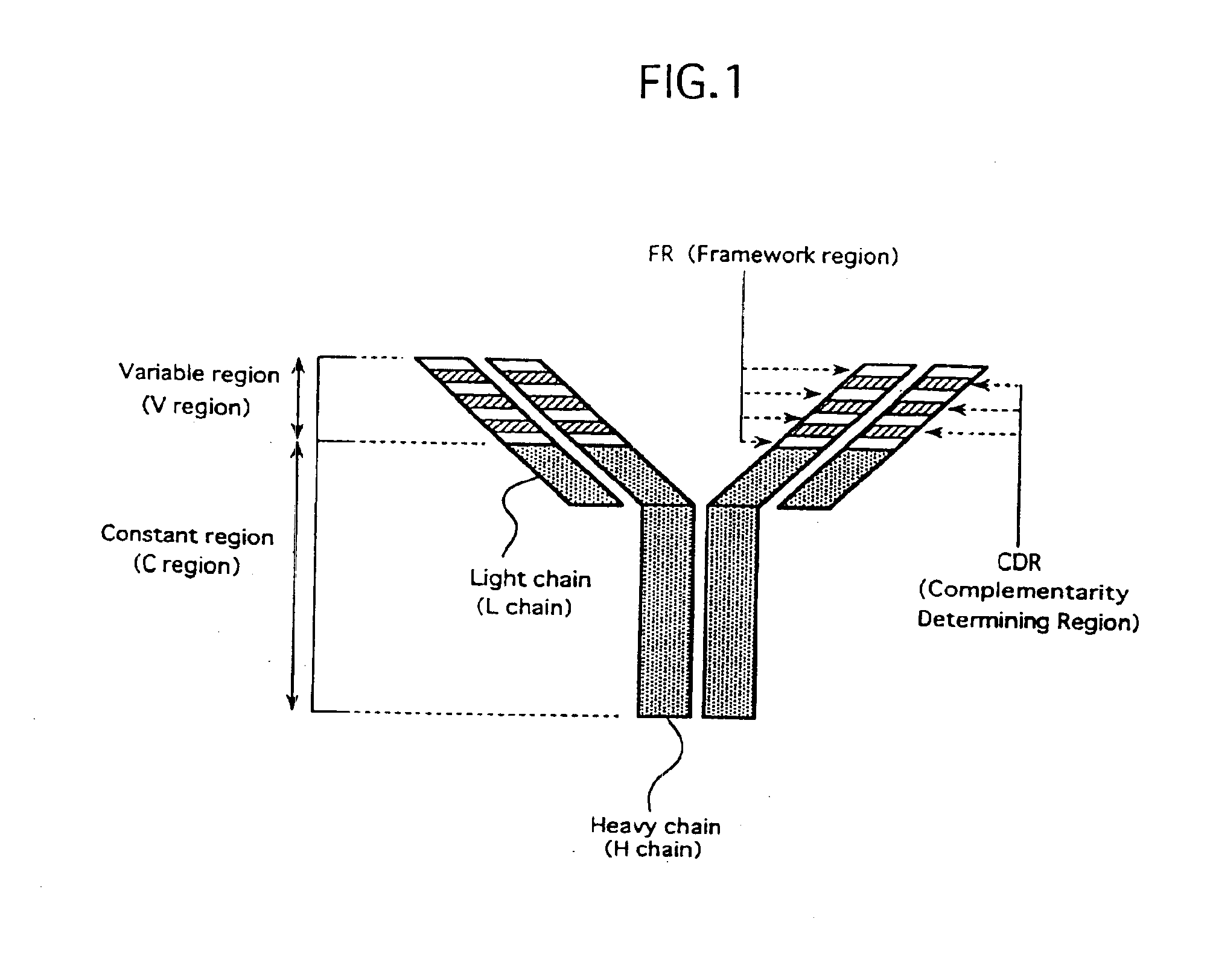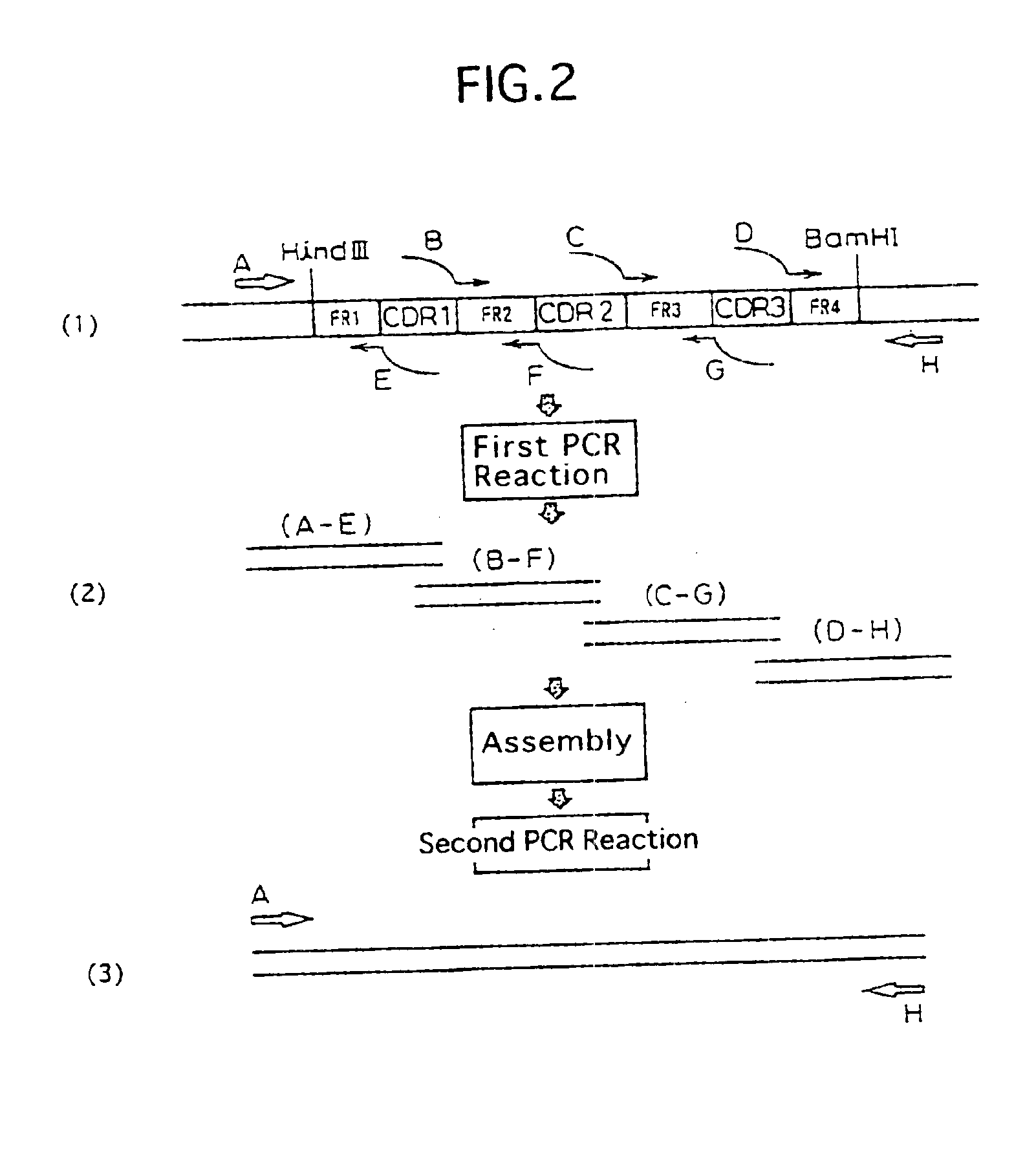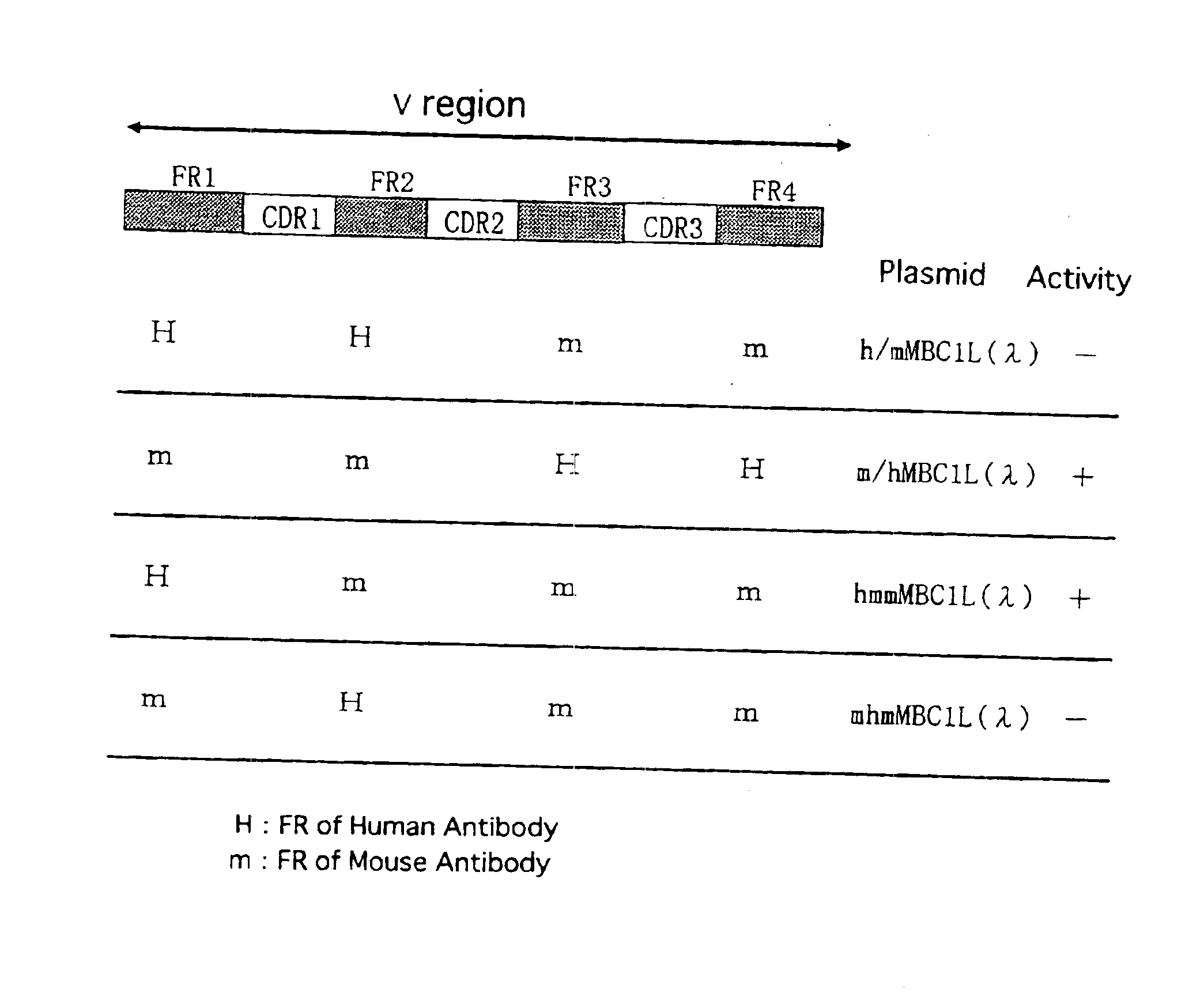Antibody against human parathormone related peptides
a parathormone and antibody technology, applied in the field of human/mouse chimeric antibodies, can solve the problems of limiting the medical therapeutic value of mouse monoclonal antibodies in humans, hypophosphatemia, nausea, etc., and achieve the effect of improving the hypophosphatemia
- Summary
- Abstract
- Description
- Claims
- Application Information
AI Technical Summary
Benefits of technology
Problems solved by technology
Method used
Image
Examples
example 1
Cloning of DNA Coding for V Region of Mouse Monoclonal Antibody Against Human PTHrP (1-34)
[0212]Cloning of the DNA coding for the V region of the mouse monoclonal antibody against human PTHrP (1-34) obtained above, #23-57-137-1, was conducted in the following manner.
(1) Preparation of mRNA
[0213]mRNA was prepared from hybridoma #23-57-137-1 using Quick Prep mRNA Purification Kit (Pharmacia Biotech) as follows.
[0214]The cells of hybridoma #23-57-137-1 obtained above were fully homogenized with an extraction buffer, and mRNA was extracted therefrom using an oligo(dT)-Cellulose Spun Column in accordance with the procedure by the manufacturer of the kit. The extraction solution was subjected to ethanol precipitation to obtain the mRNA as precipitates. The mRNA precipitates were dissolved in an elution buffer.
(2) Preparation and Amplification of cDNA of the Gene Coding for Mouse H Chain V Region
(i) Cloning of cDNA for H Chain V Region of #23-57-137-1 Antibody
[0215]A DNA coding for the H c...
example 2
Construction of Chimeric Antibody
(1) Construction of Chimeric Antibody H Chain
(i) Construction of H Chain V Region
[0231]The cloned cDNA coding for mouse H chain V region was modified by a PCR method to ligate it to an expression vector carrying the genomic DNA for the human H chain C region Cγ1. The downstream-side primer MBC1-S1 (SEQ ID NO: 7) used was designed so as to be hybridizable to the DNA coding for the 51′-end region of the leader sequence of the V region and to have both a Kozak consensus sequence (Kozak, M. et al., J. Mol. Biol., 196, 947-950, 1987) and a HindIII-recognition sequence. The upstream-side primer, MBC1-a (SEQ ID NO: 8), used was designed so as to be hybridizable to the DNA coding for the 3′-end region of the J region and to have both a splice donor sequence and a BamHI-recognition sequence. The PCR reaction was conducted using TaKaRa Ex Taq (Takara Shuzo) and a buffer appended thereto. The PCR solution (50 μl) used comprised 0.07 μg of plasmid MBC1H04 as a t...
example 3
[0290]Construction of Humanized Antibody
(1) Construction of Humanized Antibody H Chain
(i) Construction of Humanized H Chain V Region
[0291]Humanized #23-57-137-1 antibody H chain was prepared by CDR-grafting technique by means of PCR method. For preparing a humanized #23-57-137-1 antibody H chain (version “a”) having a FR derived from human antibody S31679 (NMRF-PDB; Cuisinier, A. M. et al., Eur. J. Immunol., 23, 110-118, 1993), the following six types of PCR primers were used: CDR-grafting primers: MBC1HGP1 (SEQ ID NO: 23) and MBC1HGP3 (SEQ ID NO: 24) (both containing a sense DNA sequence) and MBC1HGP2 (SEQ ID NO: 25) and MBC1HGP4 (SEQ ID NO: 26) (both containing an antisense DNA sequence), all of which containing a complementary sequence of 15-21 bp in length on both ends thereof; and external primers: MBC1HVS1 (SEQ ID NO: 27) and MBC1HVR1 (SEQ ID NO: 28), both having a homology with the CDR-grafting primers MBC1HGP1 and MBC1HGP4, respectively.
[0292]The CDR-grafting primers MBC1HGP...
PUM
| Property | Measurement | Unit |
|---|---|---|
| concentration | aaaaa | aaaaa |
| concentration | aaaaa | aaaaa |
| surface area | aaaaa | aaaaa |
Abstract
Description
Claims
Application Information
 Login to View More
Login to View More - R&D
- Intellectual Property
- Life Sciences
- Materials
- Tech Scout
- Unparalleled Data Quality
- Higher Quality Content
- 60% Fewer Hallucinations
Browse by: Latest US Patents, China's latest patents, Technical Efficacy Thesaurus, Application Domain, Technology Topic, Popular Technical Reports.
© 2025 PatSnap. All rights reserved.Legal|Privacy policy|Modern Slavery Act Transparency Statement|Sitemap|About US| Contact US: help@patsnap.com



